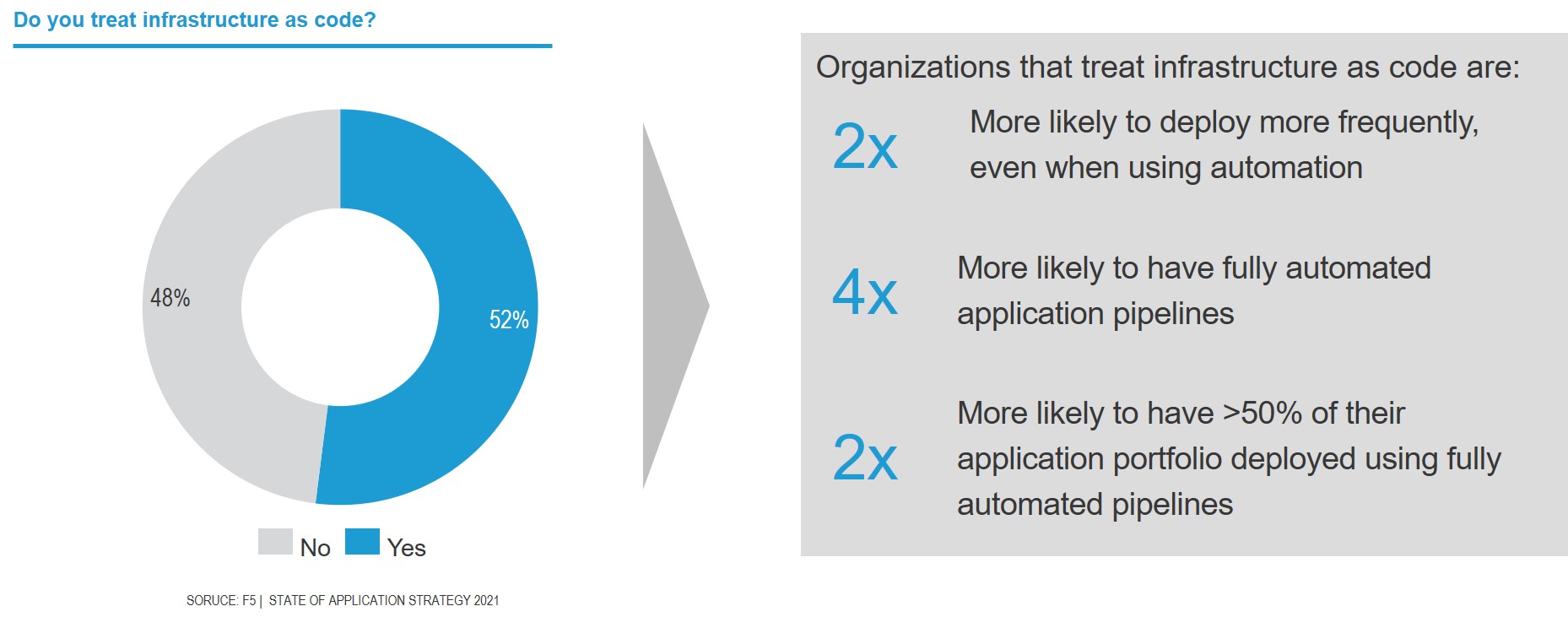El estado de la estrategia de aplicación de 2021: La eficacia de la automatización
La automatización es un componente crítico de la transformación digital, ya que es la automatización de tareas a través de aplicaciones que es el foco de la primera fase del recorrido empresarial conocida como transformación digital .
La automatización de los flujos de trabajo consume participación mental en la segunda fase a medida que la empresa expande su presencia digital para crear experiencias.
Y la automatización es fundamental para la creación y el uso posterior de información procesable a través de AIOps y otras tecnologías impulsadas por IA en la tercera y última fase: Negocios asistidos por IA.

La automatización es un concepto tan clave que es difícil hablar de ella sin algún contexto que describa qué estamos automatizando.
Cuando Cindy Borovick y yo nos sentamos cada año para analizar lo que queremos aprender de la Estrategia sobre el Estado de la Aplicação , tratamos de elaborar preguntas que sean relevantes no sólo ahora sino que también ofrezcan una visión de lo que será relevante en el futuro.
Para la automatización, eso significa ir más allá de una comprensión básica de las herramientas y tecnologías en uso para implementar la automatización. Significa explorar cómo la automatización impacta las operaciones y el negocio, así como qué resulta desafiante o frustrante para los profesionales hoy en día. También significa comprender qué enfoques está adoptando el mercado para avanzar con la automatización y cómo esos enfoques están —o quizás no— teniendo un impacto en la transformación digital.
Uno de esos enfoques es la infraestructura como código.
Infraestructura como código
Infraestructura como código (IaC) es una práctica adoptada de las metodologías DevOps y SRE que tratan los artefactos de aprovisionamiento y configuración (archivos) de la misma manera que los desarrolladores tratan el código. Esto significa que lo ideal es revisarlo, probarlo y versionarlo en un repositorio. Esto permite la automatización del proceso de implementación porque tanto las personas como las herramientas siempre pueden consultar el último artefacto cuando necesitan implementar una nueva instancia de X (donde X puede ser un servidor web o una puerta de enlace de API o un controlador de ingreso o... ya se hace una idea). Tal vez en deferencia a sus orígenes, el tipo de automatización habilitada por IaC a menudo se conoce como GitOps, porque GitHub y GitLab se usan comúnmente como los repositorios de elección y ambos están bien integrados en las herramientas de automatización de canalizaciones actuales.
Resulta que las organizaciones que adoptan IaC ven beneficios en términos del éxito de los esfuerzos de automatización.

Un poco más de la mitad (52%) de las organizaciones tratan la “infraestructura como código”. Aquellos que lo hacen tienen más probabilidades de implementar con frecuencia, tienen canales de implementación de aplicación totalmente capaces de automatizarse y automatizan un porcentaje mayor de su cartera de aplicación que sus contemporáneos.
Los beneficios de IaC y la automatización son claros, así que cabe preguntarse: ¿por qué más organizaciones no adoptan estos enfoques? Resulta que hay razones, y son buenas.
Habilidades y herramientas: los principales desafíos de la automatización
No se puede automatizar sin herramientas, y hemos estado rastreando esas herramientas durante años. A la cabeza del conjunto de herramientas aparecen opciones multicloud y a menudo de código abierto como Terraform y Ansible. Si bien las API de proveedores de nube todavía se utilizan ampliamente, son específicas de cada proveedor. Esto plantea un desafío importante para las operaciones en todos los dominios de TI (seguridad, infraestructura y red) cuando se operan aplicaciones en propiedades de la nube.
Por lo tanto, no es ninguna sorpresa el aumento de popularidad de los conjuntos de herramientas independientes de la nube. Casi la mitad de todos los encuestados (47%) utilizan herramientas como Terraform, Ansible, GitHub, GitLab, Puppet y Chef. ¿Quedando en último lugar? Los conjuntos de herramientas específicos del proveedor sólo representan el 29% de todos los encuestados. Esto habla de la necesidad de una automatización integral que no dependa de la nube, porque las carteras de aplicaciones y las tecnologías que las entregan y las protegen ahora están distribuidas en múltiples nubes públicas y privadas, centros de datos e incluso el borde.
Los conjuntos de herramientas son importantes porque son los que permiten a las organizaciones tratar la infraestructura como código. El problema es que el desafío número uno identificado por los encuestados este año fueron los conjuntos de habilidades, y la brecha más grande en conjuntos de habilidades en todo el mundo fue… espere… los conjuntos de herramientas.

No es difícil concluir que, para cerrar la brecha de habilidades y permitir que más organizaciones disfruten de los beneficios de tratar la infraestructura como código, necesitamos hacer que los conjuntos de herramientas sean más fáciles de usar, especialmente cuando se trata de automatización entre entornos.
Hay más información sobre la automatización (y mucho más) en nuestro informe anual . Léalo y luego vuelva a visitarnos aquí mientras analizamos el estado actual y futuro de las tecnologías de seguridad y entrega de aplicación .
